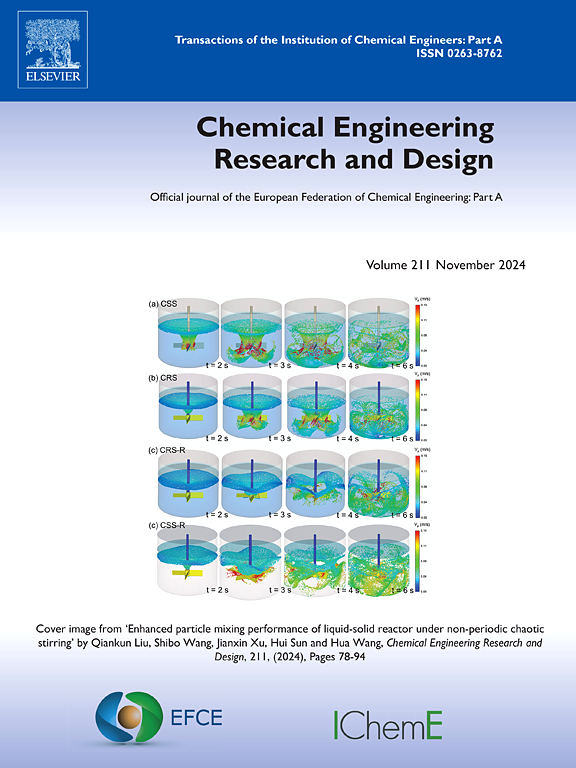Investigation of interaction binary parameters for solubilities of the natural gas components in ionic liquids with EoS for predicting phase behavior
IF 3.7
3区 工程技术
Q2 ENGINEERING, CHEMICAL
引用次数: 0
Abstract
This paper describes multicomponent solubilities in ionic liquids using non-associative and associative equations of state (EoS). The parameterization routine was developed from liquid density and speed of sound data as an implementation procedure confirmed with the Aspen Plus simulator, which was used to evaluate the EoS’ phase equilibrium predictive performance. The [EMIM][BF4] and [BMIM][NTf2] ionic liquids were employed in this work. PC-SAFT with the 4 C associative scheme showed the best results in fitting the density and speed of sound curves. The deviation for [EMIM][BF4] was 0.12 % and 0.02 %, respectively, while for [BMIM][NTf2] was 0.05 % and 0.57 %, respectively. Regarding vapor-liquid equilibria, the CPA and PC-SAFT models presented the best predictive results, while PC-SAFT (4 C) presented, in general, a better fit for the binaries studied. The binary interaction parameter is near zero using PC-SAFT for C4+. So, we recommend using PC-SAFT with =0 between ionic liquids and C5+ or heavier hydrocarbons.
利用 EoS 预测相行为,研究离子液体中天然气成分溶解度的相互作用二元参数
本文利用非关联和关联状态方程(EoS)描述了离子液体中的多组分溶解度。参数化例程是根据液体密度和声速数据开发的,其实施过程得到了 Aspen Plus 模拟器的确认,该模拟器用于评估 EoS 的相平衡预测性能。本研究采用了[EMIM][BF4]和[BMIM][NTf2]离子液体。采用 4 C 关联方案的 PC-SAFT 在拟合密度和声速曲线方面显示出最佳效果。EMIM][BF4] 的偏差分别为 0.12 % 和 0.02 %,而 [BMIM][NTf2] 的偏差分别为 0.05 % 和 0.57 %。在汽液平衡方面,CPA 和 PC-SAFT 模型的预测结果最好,而 PC-SAFT (4 C) 模型总体上更适合所研究的二元化合物。对于 C4+,使用 PC-SAFT 模型得出的二元相互作用参数 kij 接近于零。因此,我们建议在离子液体和 C5+ 或更重的碳氢化合物之间使用 kij=0 的 PC-SAFT。
本文章由计算机程序翻译,如有差异,请以英文原文为准。
求助全文
约1分钟内获得全文
求助全文
来源期刊

Chemical Engineering Research & Design
工程技术-工程:化工
CiteScore
6.10
自引率
7.70%
发文量
623
审稿时长
42 days
期刊介绍:
ChERD aims to be the principal international journal for publication of high quality, original papers in chemical engineering.
Papers showing how research results can be used in chemical engineering design, and accounts of experimental or theoretical research work bringing new perspectives to established principles, highlighting unsolved problems or indicating directions for future research, are particularly welcome. Contributions that deal with new developments in plant or processes and that can be given quantitative expression are encouraged. The journal is especially interested in papers that extend the boundaries of traditional chemical engineering.
 求助内容:
求助内容: 应助结果提醒方式:
应助结果提醒方式:


